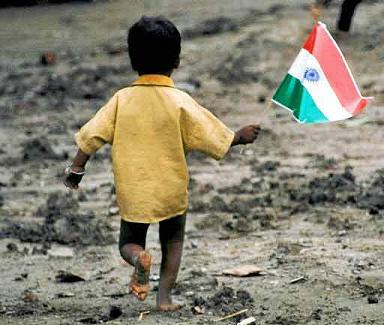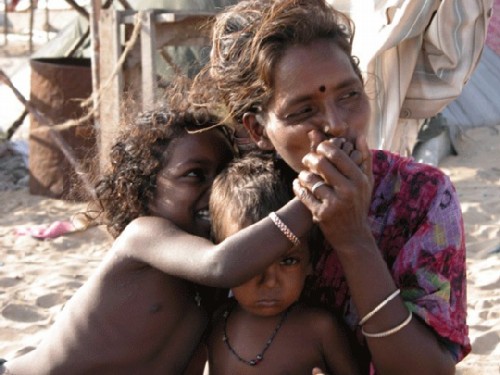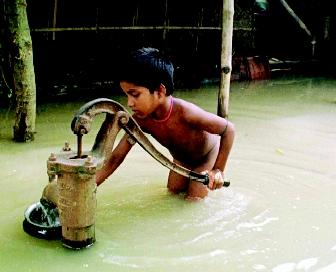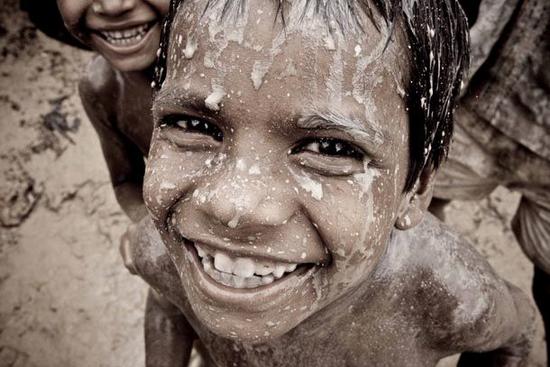
Since India’s Independence in 1947, country has faced several social and economic issues:
1 Violence
1.1 Religious violence
1.2 Terrorism
1.3 Naxalism
1.4 Caste related violence
2 Overpopulation
3 Economic issues
3.1 Poverty
3.2 Corruption
Violence
Religious violence
Constitutionally India is a secular state, but large-scale violence have periodically occurred in India since independence. In recent decades, communal tensions and religion-based politics have become more prominent.
Although India is generally known for religious pluralism, the Hindutvaideology propagates that India belongs to the Hindus, and the Christians and the Muslims are “aliens”, and many proponents of this ideology portray violence against Muslims and Christians as a form of “self-defence” against “invaders”.
The Hindutva ideology is at the core of Sangh Parivar politics and its expression in violence against religious minority. Throughout the history of post-Independence India, both Muslim and Christian communities have faced repeated attacks from Hindu activists. As the Hindutva ideology has grown more powerful over the years, many Hindutva activists have partaken in riots against minority communities.
Over the last decade, religious violence in India has increasingly become what academics believe to be organized pogroms to eliminate minority communities. Some state governments in India have been accused of not effectively prosecuting those who attack religious minorities. Major religious violent incidents include Ayodhya debate, Bombay Riots, 1993 Bombay bombings, 2002 Gujarat violence.
Although related, Hinduism and Hindutva are different.
Hinduism is a religion while Hindutva is a political ideology. The Hindutva movement is not supported by majority of Hindus. Some tolerant or “secular” Hindus use the term “Hindu Taliban” to describe the supporters of the Hindutva movement. Fukuoka Asian Culture Prize-winning Indian sociologist and cultural and political criticAshis Nandy argued “Hindutva will be the end of Hinduism.”
In Jammu and Kashmir, Since March 1990, estimates of between 250,000 to 300,000 pandits have migrated outside Kashmir due to persecution by Islamic fundamentalists in the largest case of ethnic cleansing since the partition of India. The proportion of Kashmiri Pandits in the Kashmir valley has declined from about 15% in 1947 to, by some estimates, less than 0.1% since the insurgency in Kashmir took on a religious and sectarian flavor. Many Kashmiri Pandits have been killed byIslamist terrorists in incidents such as the Wandhama massacre and the 2000 Amarnath pilgrimage massacre.
In recent years, there has been a sharp increase in violent attacks on Christians in India, often perpetrated by Hindu Nationalists.[22] The acts of violence include arson of churches, re-conversion of Christians to Hinduism, distribution of threatening literature, burning of Bibles, raping of nuns, murder of Christian priests and destruction of Christian schools, colleges, and cemeteries.
The Sangh Parivar and related organisations have stated that the violence is an expression of “spontaneous anger” of “vanvasis” against “forcible conversion” activities undertaken by missionaries, a claim described as “absurd” and rejected by scholars. Between 1964 and 1996, thirty-eight incidents of violence against Christians were reported.
In 1997, twenty-four such incidents were reported. In 2007 and 2008 there was a further flare up of tensions in Orissa, the first following the Christians’ putting up a Pandhal in land traditionally used by Hindus and the second after the unprovoked murder of a Hindu Guru and four of his disciples while observing Janmashtami puja. This was followed by an attack on a 150-year-old church in Madhya Pradesh, and more attacks in Karnataka,
Terrorism
The regions with long term terrorist activities today are Jammu and Kashmir, Central India (Naxalism) and Seven Sister States (independence and autonomy movements). In the past, the Punjab insurgency led to militant activities in the Indian state ofPunjab as well as the national capital Delhi (Delhi serial blasts, anti-Sikh riots). As of 2006, at least 232 of the country’s 608 districts were afflicted, at differing intensities, by various insurgent and terrorist movements.
Terrorism in India has often been alleged to be sponsored by Pakistan. After most acts of terrorism in India, many journalists and politicians accuse Pakistan’s intelligence agency, the Inter-Services Intelligence of playing a role. Recently, both the US and Afghanistan have accused Pakistan of carrying out terrorist acts in Afghanistan.
Naxalism
Naxalism is an informal name given to communist groups that were born out of the Sino-Soviet split in the Indian communist movement. Ideologically they belong to various trends of Maoism. Initially the movement had its centre in West Bengal. In recent years, they have spread into less developed areas of rural central and eastern India, such as Chattisgarh and Andhra Pradeshthrough the activities of underground groups like the Communist Party of India (Maoist).
The CPI (Maoist) and some other Naxal factions are considered terrorists by the Government of Indiaand various state governments in India. 
Caste related violence
Caste-related violence and hate crimes in India have occurred despite the gradual reduction of casteism in the country. Independent India has witnessed considerable amount of violence andhate crimes motivated by caste. Ranvir Sena, a caste-supremacist fringe paramilitary group based in Bihar, has committed violent acts against Dalits and other members of the scheduled castecommunity.
Phoolan Devi, who belonged to Mallah lower-caste, was mistreated and raped by upper-caste Thakurs at a young age. She then became a bandit and carried out violent robberies against upper-caste people. In 1981, her gang massacred twenty-two Thakurs, most of whom were not involved in her kidnapping or rape. Phoolan Devi went on to become a politician and Member of Parliament.
Over the years, various incidents of violence against Dalits, such as Kherlanji Massacre have been reported from many parts of India.
At the same time, many violent protests by Dalits, such as the 2006 Dalit protests in Maharashtra, have been reported as well.
The Mandal Commission was established in 1979 to “identify the socially or educationally backward”, and to consider the question of seat reservations and quotas for people to redress caste discrimination.
In 1980, the commission’s report affirmed the affirmative action practice under Indian law whereby members of lower castes were given exclusive access to a certain portion of government jobs and slots in public universities. When V. P. Singh Government tried to implement the recommendations of Mandal Commission in 1989, massive protests were held in the country. Many alleged that the politicians were trying to cash in on caste-based reservations for purely pragmatic electoral purposes.
In 1990s, many parties Bahujan Samaj Party (BSP), the Samajwadi Party and the Janata Dal started claiming that they are representing the backward castes. Many such parties, relying primarily on Backward Classes’ support, often in alliance with Dalits and Muslims, rose to power in Indian states At the same time, many Dalit leaders and intellectuals started realizing that the main Dalit oppressors were so-called Other Backward Classes,[36] and formed their own parties, such as the Indian Justice Party.
The Congress (I) in Maharashtra long relied on OBCs’ backing for its political success.[35] Bharatiya Janata Party has also showcased its Dalit and OBC leaders to prove that it is not an upper-caste party. Bangaru Laxman, the former BJP president (2001–2002) was a former Dalit. Sanyasin Uma Bharati, former CM ofMadhya Pradesh , who belongs to OBC caste, was a former BJP leader. In 2006 Arjun Singh cabinet minister for MHRD of the UPAgovernment was accused of playing caste politics when he introduced reservations for OBCs in educational institutions all around.
Overpopulation
India suffers from the problem of overpopulation. Though India ranks second in population, it ranks 33 in terms of population densitybelow countries such as The Netherlands, South Korea and Japan. To cure this problem, Indira Gandhi, Prime Minister of India, had implemented a forced sterilization programme in the early 1970s but failed. Officially, men with two children or more had to submit to sterilization, but many unmarried young men, political opponents and ignorant, poor men were also believed to have been sterilized. This program is still remembered and criticized in India, and is blamed for creating a wrong public aversion to family planning, which hampered Government programmes for decades.
Poverty
One-third of India’s population (roughly equivalent to the entire population of the United States) lives below the poverty line and India is home to one-third of the world’s poor people.
Though the middle class has gained from recent positive economic developments, India suffers from substantial poverty. According to the new World Bank’s estimates on poverty based on 2005 data, India has 456 million people, 41.6% of its population, living below the new international poverty line of $1.25 (PPP) per day.
The World Bank further estimates that 33% of the global poor now reside in India. Moreover, India also has 828 million people, or 75.6% of the population living below $2 a day, compared to 72.2% for Sub-Saharan Africa.
Wealth distribution in India is fairly uneven, with the top 10% of income groups earning 33% of the income. Despite significant economic progress, 1/4 of the nation’s population earns less than the government-specified poverty threshold of $0.40/day. Official figures estimate that 27.5%[47] of Indians lived below the national poverty line in 2004–2005.[48] A 2007 report by the state-run National Commission for Enterprises in the Unorganised Sector (NCEUS) found that 25% of Indians, or 236 million people, lived on less than 20 rupees per day[49] with most working in “informal labour sector with no job or social security, living in abject poverty.”
Corruption
Corruption is widespread in India. India is ranked 72 out of a 179 countries in Transparency International’s Corruption Perceptions Index, although its score has improved consistently from 2.7 in 2002 to 3.5 in 2007. Corruption has taken the role of a pervasive aspect of Indian politics and bureaucracy.
In India, corruption takes the form of bribes, evasion of tax and exchange controls, embezzlement, etc. A 2005 study done by Transparency International (TI) India found that more than 50% had firsthand experience of paying bribe or peddling influence to get a job done in a public office. The chief economic consequences of corruption are the loss to the exchequer, an unhealthy climate for investment and an increase in the cost of government-subsidised services.
The TI India study estimates the monetary value of petty corruption in 11 basic services provided by the government, like education, healthcare, judiciary, police, etc., to be around Rs.21,068 crores. India still ranks in the bottom quartile of developing nations in terms of the ease of doing business, and compared to China and other lower developed Asian nations, the average time taken to secure the clearances for a startup or to invoke bankruptcy is much greater

*http://en.wikipedia.org/wiki/Socio-economic_issues_in_India



